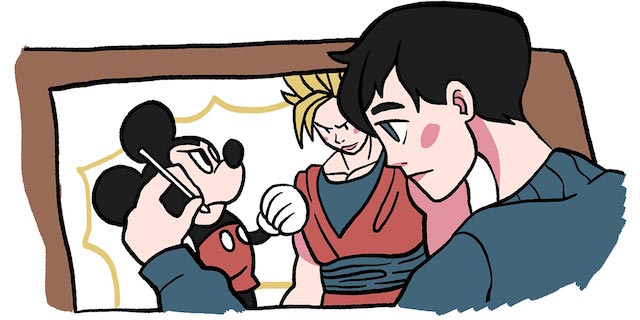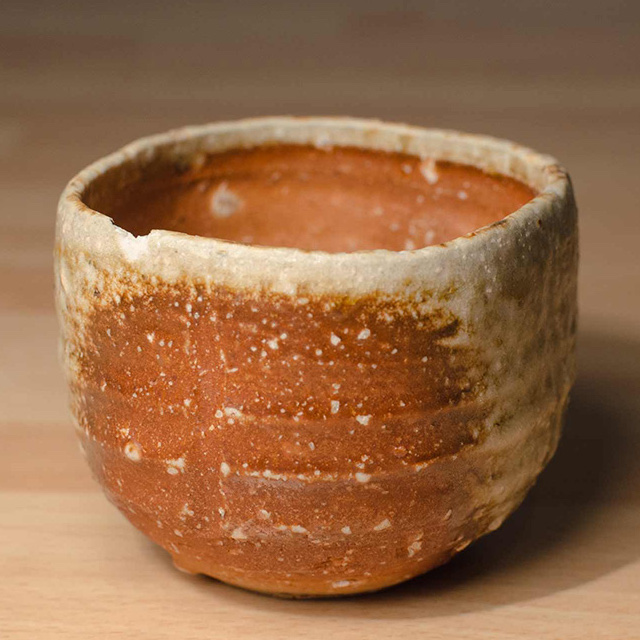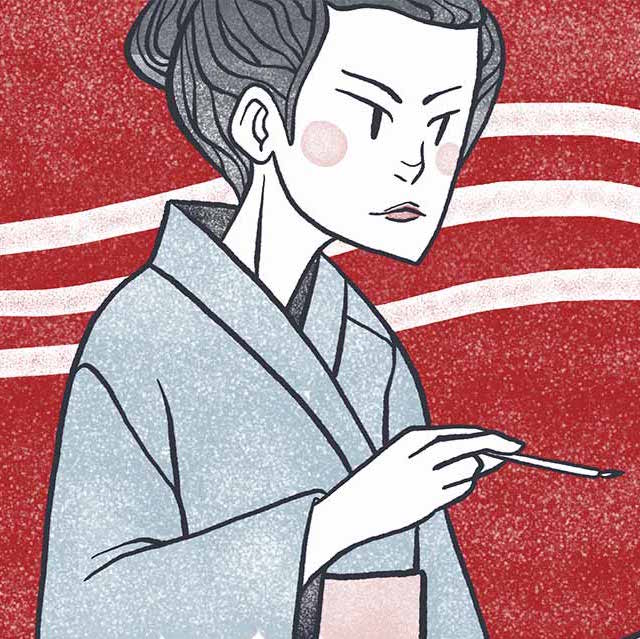It's that time of year again, when Tofugu celebrates the end of the year by selecting some of our favorite posts to share with you. With articles ranging from Shinto history to Japanese horror films, and badass Japanese women to another delicious Pocky Day, choosing the best was a bit of a challenge! But we were able to narrow our list down to 9 picks. So without further ado, here are our Favorite Posts of 2016. Enjoy!
1. Japan's Doujinshi Culture Of Creativity Through Theft
Koichi: Before this, I didn't know much about doujinshi culture. I also didn't understand the huge implications it has on the manga and anime industry. In the end, I found I had a newfound appreciation for doujinshi and the people who make them. Also, I got to ask Aya to draw a doujinshi of Batman threatening to eat Robin, so that was pretty cool. Read the article
2. Kagaya Izakaya: Frog is Stranger than Fiction
Viet Hoang: I remember the Tofugu team going over the itinerary on our last information-gathering trip in Japan. A few of the items were normal affairs, others were "Japan-weird" normal. But when Kagaya came up, Koichi nonchalantly described it as an izakaya run by a man in a frog suit who occasionally flips out and indiscriminately tosses random things at his customers.
And a slight smirk came across his face.
"Okay. There must be something more to this," I thought. What is the narrative behind this guy's establishment? When I enquired about this, Koichi just gave a slight shrug. I had a feeling we were going to be in for a hell of a ride. And a ride it sure was.
If you are looking for an atypical theatrical experience in Japan, one filled with action, suspense, romance, and great home cooked food, it is hard to not recommend the izakaya, where frog is stranger than fiction. Read the article
3. Wabi-Sabi and Understanding Japan
Michael Richey: Wabi-sabi is one of those concepts you can't define – not in a sentence, not in an article, not in a book. It's like trying to define art or music. That's why I like this article. It doesn't try to define wabi-sabi or put it in a box. Instead, it gives you a foundation so you can start exploring the concept for yourself.
For example, earlier this year the sword of my brand new S.H. Figuarts deluxe action figure (yes, I like toys) broke in half shortly after I took it out of the box. Usually, this is a big deal for a nerd like myself, but because of the wabi-sabi article I didn't get too upset. Instead, I glued the sword back together, knowing the repaired break on the little plastic sword became part of that little plastic sword. The imperfection didn't ruin the object, it made it unique. And if that can be true of broken plastic, maybe it can also be true of other broken things too (arms or hearts, for example).
That's what I got out of it, anyway. Maybe I'm missing the point somehow, but at the very least the article got me thinking in a way I didn't before. And I think that's pretty special. Read the article
4. The Art of Punctuation
Carla Sinclair: I'm the kind of person who enjoys kicking back with a good ol' grammar book or style guide in hand, so when I noticed there was an article about Japanese punctuation, I couldn't wait to read it. And it didn't disappoint!
- 波線 (なみせん)
- Wave dash (~)
Of the few Japanese classes I've taken, no one ever focused on punctuation. I never learned what the wave dash (~) 波線 or the interpunct (・) 中黒 was, or that the circle period usually gets omitted if it's in a sentence with quotes. But this article talks about it all, and it even sprinkles in some punctuation history. Definitely my favorite post of 2016. Read the article
5. Dajare: 13 Types of Japanese Puns
Kristen Dexter: If you know me, you know I hate puns. I attribute this to the fact that I'm forced to hear them all day every day (at home and at work). I hate puns so much I made a pun jar for the Tofugu office, so that every time one of these groan-worthy garbage words reaches my ears, other people have to pay for it. Literally. So how did this end up being my favorite post?!
This article had the nerve to teach me that puns are just a few steps away from the literary references made in poetry and literature. That play-on-words aren't always cringe-inducing, but can open up a whole slew of feelings a non-native just wouldn't get to experience. This is stuff I deal with every day as a translator, but I had never thought of puns as being on the same level as some of the Heian poetry I hold so close to my heart. It made me mad, but it still opened my eyes.
In the end, this article made me think about how if you really want to know a language - like really get it - you need to be able to get the silly parts too. It's not all textbooks, tests, and high-brow syntactic studies. Wordplay, low-brow references, and silly homophone usage are all a big part of that. So while there's still no place for English puns in my life, I guess I can let a few Japanese ones in for the time being. Read the article
6. Thanksgiving in Japan?
Mami Suzuki: My favorite article of 2016 was "Thanksgiving in Japan." Before coming to Canada, my husband and his brother had experienced a really enjoyable Thanksgiving celebration in Japan, but like they said, and as this article tells us, it can be difficult to get everything in order.
Since coming to Canada, I've been able to experience the full-blown festivities, and Thanksgiving has taken up permanent lodgings in a very special place in my heart - particularly its arteries.
I really liked hearing how some problems were resolved in terms of getting the meal together, as well as what other delicious ideas were brought to the table. The next time I'm in Japan over Thanksgiving, I plan on coming back to this article to help me provide my family with a proper Thanksgiving dinner.
P.S. My husband was also surprised when he saw the look on my face after trying root beer. It's funny, I think he thought he was doing me a favor by introducing it to me. Read the article
7. The Meaning of Itadakimasu
Kanae Nakamine: This article is very informative, not only for Japanese learners, but also for Japanese people living outside of Japan. After I came to the States, I realized that itadakimasu is untranslatable, and I always wondered how to explain this unique tradition to non-Japanese people.
Also, I kind of get annoyed when I see it translated as "bon appétit" (Terrace House always translates it this way), because "bon appétit" is an expression that a person who cooks or serves says, and then people who start eating respond "Merci" – this is the opposite of itadakimasu!
This article made me realize that language is related to culture and made me more curious about the background and roots of words. Read the article
8. Tengu: The Japanese Demon That's Basically a Mini-God
Jamal Lee: The crimson red tengu mask, with a twisted grin and protruding schnoz, is the clearest memory I have of first interacting with Japanese culture. As a midwesterner with little cultural interaction, it scared the hell out of me. But as I grew older and more curious about Japan, I started to seek out information about the tengu, primarily through manga and anime. As expected, I learned about their status as classic Japanese villains, their "superpowers," and how you wouldn't want to be caught dead around one of these tricksters. I chose this article as my favorite post of 2016 because it filled in the gaps that comics and cartoons couldn't, with cultural relevance. Read the article
9. Higuchi Ichiyō: Badass Women in Japanese History
"In attempting a venture with all one's heart, discarding worldly desires and being unafraid in all matters of life and death, a woman can achieve as much as a man can." - Higuchi Ichiyō
Aya Francisco: I love everything about this article. It introduced me to an author in Japanese literature I knew little of and showed me how much she kicked literary ass during the Meiji Period. I was bummed out when I realized how young she had died, leaving only her works. It also showed me how much you can do in such a short time despite the struggles you face (and how she fought for her sh*t!), and it's something I think about a lot whenever I work on an illustration or put out a piece that people will see. S/O to Kristen for putting that quote at the end of the article. I need to get that printed out and framed on my workspace ASAP. Read the article








